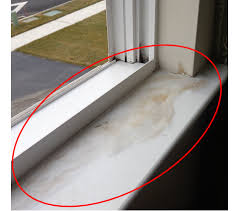 May 2015
May 2015
Just how safe is the air we breathe?
Poor indoor air quality can affect people in many ways including asthma and allergies. Mould, mildew, dust mites, pollen, air cleaners and ventilation are all concerns. Duct cleaning is periodically undertaken as much for safety and risk of fires as it is for improving air quality.
Some believe that air quality is an issue to address while others feel the issue has always existed and is undetectable.
Increasingly the subject comes around to mould if for no other reason than it is controllable. Improved technology allows us to identify and treat mould. Yet few understand the problems resulting from mould.
The reality is that we are creating homes and buildings more vulnerable to conditions that promote the growth of mould. It is also true that mould is one of the most common causes of frequently reported respiratory problems.
Buildings provide an ideal environment for mould to grow
What is Mould and Mildew
Mildew is a fungus-caused discoloration of an underlying, porous material. It is usually gray or white. Mildew typically grows on damp surfaces such as bathroom walls, leather or fabric. Mildew is an early stage of mould.
Mould refers to a fungus growth on a porous, often rotting material. Essentially, mould is fungus growth as it feeds on organic matter. It can reproduce by means of airborne spores.
How Mould Grows
Mould requires certain conditions to reproduce and grow. It requires water, food, and the right temperature range. It grows best in a dark environment with an organic, porous material to grow on.
Buildings provide a nearly ideal environment. Internal building temperatures are often ideal for mould growth. There are many dark places and organic substances for it to grow on. Once water is added to the mix an ideal mould breeding ground has been created.
Dry rot, wood decay caused by fungus growth, is similar to mould and requires the same combination of conditions for ideal growth. If you have dry rot, you likely have mould.
Why Mould is a Problem
Mould can destroy most organic materials found in buildings such as wood, paper, carpet and glue. Almost any surface can support the growth of mould. It typically grows in dark, moist places such as behind walls or in HVAC ducts.
Exposure to high concentrations of dust contaminated by fungus can cause flu-like symptoms. Prolonged exposure can lead to permanent lung damage.
Exposure to fungus can cause allergic reactions. Symptoms include a runny nose, sneezing, eye irritation, cough, or aggravation of asthma.
Finding Mould
Mould is often a symptom of a water problem. The first step in seeking out mould problems in a building is to follow the water.
Identify areas of high humidity, condensation, or visual evidence of water staining. Near these areas mould is most likely to grow in dark and hidden places such as behind walls. Musty odours and physical symptoms by residents are other clues to the existence of mould.
Eliminating Mould
Dealing with mould begins with solving any water problems. The source of moisture feeding mould must be found and eliminated. Only then should the process of remediation begin.
Eliminating mould involves cleaning affected materials or the removal and replacement of these materials. The decision to clean or replace materials will depend on the extent of damage by mould or water.
Small areas of mould can be addressed by homeowners or building management. Trained contractors are necessary for larger affected areas.
Air cleaners such as purifiers or ionizers generally deal with the symptoms of mould and fail to eliminate its cause.
Henry Jansen is President of Criterium Jansen Engineers and a specialist in dealing with mould. The company’s web site is www.criterium-jansen.com.



